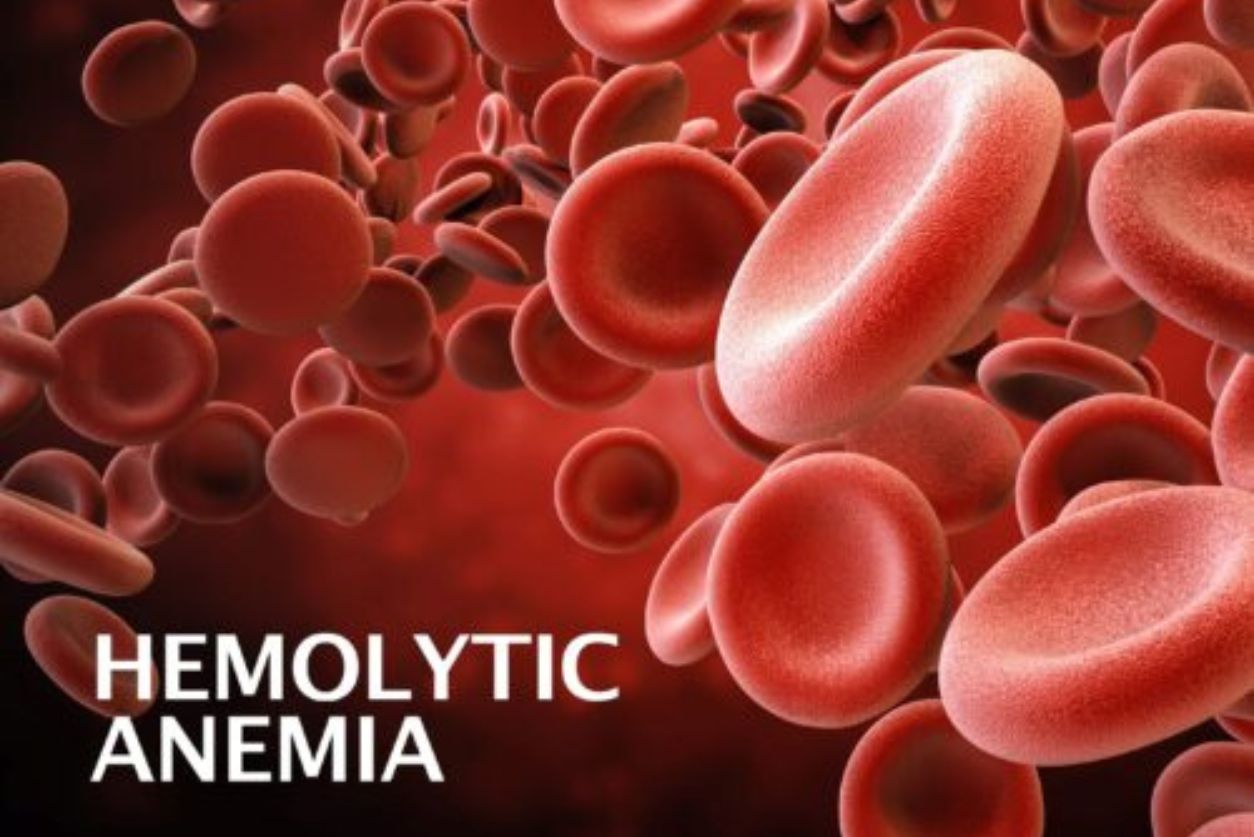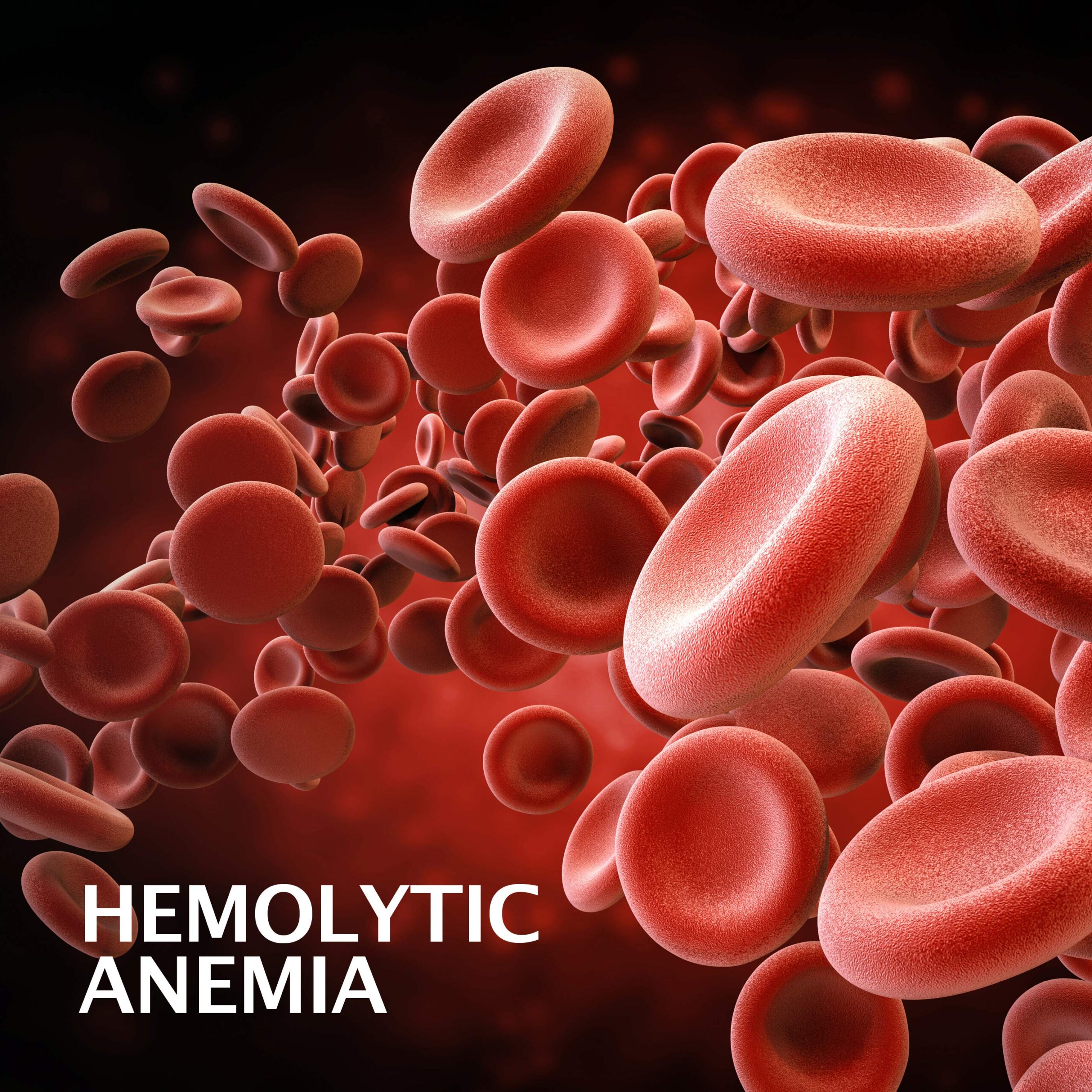
Hemolytic Anemia
Your blood is made up of cells, plasma, and platelets. If any of these components are lacking or not functioning correctly, your risk of developing a serious disorder increases. An example of one of these conditions is hemolytic anemia.
Anatomy
Blood contains red blood cells (created by bone marrow) that transport oxygen to cells, tissues, and organs. The red blood cells furnish these areas with the nutrition they need to perform their daily functions.
Hemolytic Anemia
Your body normally destroys old or faulty red blood cells in the spleen or other parts of your body through a process called hemolysis. Hemolytic anemia occurs when red blood cells are destroyed too quickly. The problem can also emerge when the cells die faster than your bone marrow can create them.
Causes
Hemolytic anemia is broken down into two categories of causes: extrinsic and intrinsic.
Extrinsic
Extrinsic causes result from illnesses that impact your blood or its composition. Examples of these include:
- Autoimmune disorders.
- Various types of cancer.
- Chemicals produced by benign tumors.
- Pathogenic infections.
- An enlarged spleen.
- Liver disorders.
The extrinsic variation may also be a side effect from using antibiotics, pain-relievers, and inflammation-reducers.
Receiving transfusions of the wrong blood type could also cause an aggressive and possibly deadly form of hemolytic anemia. This episode is triggered because your body will view the wrong blood type as an invader and attack the cells rapidly.
Intrinsic
The intrinsic form of hemolytic anemia develops when red blood cells fail to develop or work correctly. Examples of these are inherited blood disorders and specific nutritional deficiencies.
Hemolytic Anemia in Newborns and Children
Unfortunately, hemolytic anemia can and does impact children.
- Newborns – Infants usually develop the problem because they do not share their mother’s blood type. This is likely caused by the mother and child sharing an incompatible Rh factor. Fortunately, this can be identified and cured.
- Children – Children get this condition after a recent pathogenic infection. In most instances, these are viruses. Kids with certain forms of cancer, immune system diseases, or who use certain drugs can also stand at an increased risk.

Symptoms
Symptoms of hemolytic anemia differ from person to person. The common ones people see most include:
- Fatigue.
- A pale skin color.
- Elevated body temperature.
- Vertigo.
- The inability to engage in physical activity.
- Increased pulse rate.
- Body aches.
As the condition progresses, you might experience more severe symptoms such as jaundice. Jaundice has several identifiers, including:
- A yellow hue to the skin, eyes, and mouth.
- Abnormal heart rhythms.
- Mental confusion.
- Enlarged spleen and liver.
- Dark-colored urine.
Complications
If your condition does not get the proper diagnosis and aggressive treatment, it can have dangerous complications on your health. These can include:
- Heart rhythm irregularities.
- Serious heart problems like cardiomyopathy.
- Heart failure.
Diagnosis
The symptoms of hemolytic anemia can mimic those of other blood disorders and medical conditions. A prompt and correct diagnosis is needed to identify the most appropriate treatment to bring it under control.
Diagnosis often requires several steps. During the initial exam, your doctor will:
- Take your vitals.
- Ask you when symptoms began.
- Ask if the symptoms were accompanied by other concerns.
- Ask if any activities make it worse.
If the doctor suspects a blood disorder like hemolytic anemia, they will also ask if you or anyone in your family has had a history of blood disorders.
The next stage of examination involves a series of tests. These tests assess various blood criteria, liver function values, bone marrow evaluations, urine analysis, and genetic testing.
Specific blood tests include:
- Bilirubin Evaluation – This test measures how effectively your liver processes hemoglobin. Hemoglobin is a protein found in red blood cells that helps carry oxygen to your organs. It also transports carbon dioxide out of your tissues to your lungs, then expelled when you breathe. When hemoglobin levels are low, you likely also have a low red blood cell count.
- Hemoglobin Measurements – This test allows doctors to estimate red blood cell counts by determining the hemoglobin levels.
Reticulocyte Count – This test measures how many reticulocytes (developing red blood cells) are currently produced by your body.
Potential Treatment Options
Once the diagnosis is confirmed, your doctor will prescribe the most appropriate treatment option. In simple, asymptomatic cases, therapy might not be necessary. Several factors determine treatment options, including:
- Your age.
- Your general health.
- The condition’s severity.
Common treatments include:
- IVIG – IVIG is an abbreviation for intravenously administered immunoglobulin. This form of treatment is an immune system-suppressing substance that can be effective in individuals with hemolytic anemia resulting from an autoimmune condition.
- Corticosteroids – This treatment addresses the immune system-triggered form of hemolytic anemia and reduces inflammation and swelling. Corticosteroids are proven to prevent red blood cell destruction.
- Blood Transfusions – Blood transfusions are performed to elevate your red blood cell count quickly. This procedure helps replace the lost cells with newer and stronger ones.

Surgical Procedures
In the most severe instances, you might need to undergo splenectomy surgery. During this procedure, doctors remove your spleen – the organ that destroys damaged or unneeded red blood cells.
Removing the spleen typically reduces the rate at which red blood cells are processed. This procedure is usually performed in patients who have not responded well to steroids or immune system-suppressing agents.
Bone Marrow Transplants
Sometimes, bone marrow transplants might reduce or eliminate the problem. Donated compatible bone marrow can regenerate and reverse anemic conditions.
Eliminating Or Changing Medications
If a specific drug is a cause, you might find relief by stopping the regimen or finding a different medication that does not cause red blood cells damage.
Addressing The Underlying Condition
Hemolytic anemia might be short-lived in people whose conditions result from preexisting health concerns. Receiving a proper diagnosis and undergoing treatment for these conditions might quickly eliminate blood-related side effects.
Recovery
The road to recovery depends on the specific circumstances. If your case is mild or caused by an immediately correctable problem, the disease might only last for brief periods. If the condition results from lingering concerns like inherited diseases, treatment must remain a lifelong process.
Most doctors believe that diagnosing hemolytic anemia at its earliest possible stage is crucial to curing or managing the illness. Beginning treatment in the disease’s initial phases might keep symptoms at bay and lessen the risk of complications.
Prevention
It may be hard to prevent hemolytic anemia, but certain factors can be considered.
For example, if the chemical G6PD brings on your condition, it might be beneficial to avoid products containing it.
Episodes caused by blood transfusion errors are avoidable with careful management of stored blood and knowledge of a patient’s blood type.
Contacting Us
Our practice began more than 15 years ago and has emerged as one of the leading gastroenterology practices in central Florida. We perform several diagnostic procedures using state-of-the-art equipment in a friendly, comfortable, and inviting atmosphere. Patient care is always a top priority. Contact us today!